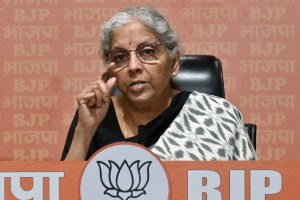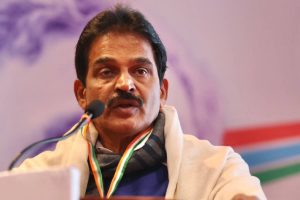The way in which the Supreme Court has nullified its own judgment in the Highway liquor ban case is a sad commentary on our legal system. One may have difference of opinion about the judgment delivered on 15 December 2016 (Balu’s case -1) which was reiterated and clarified on 31 March 2017 (Balu’s case-2).
By these judgments, with a few regional exceptions, the apex court restrained the States and the Union Territories “from granting licence for sale of liquor along National and State highways” and clarified that this prohibition would “extend to and include stretches of such highways which fall within the limits of a Municipal Corporation, city, town or local authority”.
In Balu’s case-2, the request for exempting “segments of National and State Highways which fall within the limit of Municipal or local authorities” was categorically rejected, relying on the earlier judgment, which according to the court, “indicates a rationale and basis for not allowing (such) exception”.
The court relied on a study of 2009 which said that a road accident occurred in the country every four minutes. In 2009 alone, according to data, 27,152 accidents occurred in India due to drunken driving, which the court noted. It relied on Section 185 of the Motor Vehicles Act that penalises driving under intoxication.
Another communication by the Ministry of Road Transport of 18 March 2013 which said that in 2011, 1.42 lakh people were killed in 4.9 lakh road accidents and that 24,655 road accidents were caused due to drunken driving resulting in 10,553 deaths and injuries to 21,148 persons was also referred to by the court.
The court said: “The law on preventing drunken driving also requires proper enforcement. Having said this, the Court must accept the policy of the Union Government for more than one reason. First and foremost, it is trite law that in matters of policy, in this case a policy on safety, the Court will defer to and accept a considered view formed by an expert body.
Second, as we have seen, this view of the Union Government is based on statistics and data which make out a consistent pattern year after year. Third, the existence of liquor vends on highways presents a potent source for easy availability of alcohol.
The existence of liquor vends, advertisements and signboard drawing attention to the availability of liquor coupled with the arduous drives particularly in heavy vehicles makes it abundantly necessary to endorse the policy of the Union Government to safeguard human life. In doing so, the Court does not fashion its own policy but enforces the right to life under Article 21 of the Constitution based on the considered view of expert bodies”.
Relying on earlier judgments, the court also reiterated the settled legal position that there is no fundamental right to trade in liquor for it is regarded as “res extra commercium” (a thing outside commerce). Thus, the court gave a creative dimension to Article 47 of the Constitution that talks about State’s duty to strive for prohibition.
The original judgments were delivered under Article 142 of the Constitution, which empowers the apex court to do “complete justice” in a given case. The Highway liquor ban also had a great socio-economic message.
The nation found an activist court upholding the most ordinary citizen’s right to life under Article 21. It exposed the menace of drunken driving and attempted to rescue the common (wo)man. It was a big blow to the liquor lobby across the world that found a dangerously lucrative market along the stretches of the Indian roads.
Not only the liquor lobby in the country, but also very many star lawyers who represent the Indian legal plutocracy, criticised the judgments predominantly on the ground that the court had trespassed into the forbidden zone of ‘policy making’, which is the prerogative of the Executive.
The court’s reiteration that the ‘basis and foundation’ of the judgments was Government’s own policy and the decision of the National Road Safety Council and the instructions which the Centre issued to the State Governments, was conveniently hushed up in the mainstream media discourse. Political parties with their partisan interest were not able to appreciate the pro-people verdicts.
Surprisingly, the court thereafter took a U-turn in the matter and practically reversed its own judgment, that too by a method not recognized by law. In my view, the episode calls for a national debate, not just with respect to the ‘liquor ban’ aspect of the judgment, but rather with respect to the process by which the “final not infallible” court handled the issue.
What followed was truly dispiriting. The court, in the Arrive Safe Society case, by way of an unusual order, exempted the stretches of the Highways in the municipal areas in the entire country from the rigour of the earlier judgments.
Such a question was not a matter in issue in that case. The only issue in the Arrive Safe Society case was the correctness of the Punjab and Haryana High Court’s order exempting the stretches in the Union Territory of Chandigarh from the liquor ban.
By way of a passage that was apparently uncalled for, viewed from the subject matter of the case, the top court contradicted its own “rationale and basis” which it claimed in its original verdicts of 15 December 2016 and 31 March 2017.
Again, with astonishing irrationality, on 23 February 2018, the court issued a further order permitting the Government to consider exempting even the Panchayat areas which are “proximate to municipal agglomeration or is sufficiently developed” from the ambit of the initial prohibitory judgments. Thereafter, that order was extended even to the toddy shops in Kerala which supply toddy – an indigenous liquor having 9.56 per cent of alcohol.
Was it legally and constitutionally possible for the Supreme Court to annihilate its own judgment, that too in the guise of clarifications? When an application for review alone is legally permissible, a modification or change in the judgment by way of clarification is impermissible, going by the principles laid down in Gurdip Singh Uben (2000), Cine Exhibitions Pvt.Ltd. (2012) and Abdul Kareem (2007). This proposition was placed before the court at the relevant stage and was referred to by the court, yet no convincing answer was given.
Doctrine of “stare decisis” (binding precedents) is a categorical imperative for maintenance of rule of law (see Shanker Raju v.Union of India (2011) 2 SCC 132). In Ganga Sugar Corporation (1980) 1 SCC 223, the court said that “enlightened litigative policy in the country must accept as final the pronouncements of the Supreme Court”. In the words of Justice Frankfurter, the policy of stare decisis “represents an element of continuity in law and is rooted in the psychologic need to satisfy reasonable expectations” (Helvering v. Hallock, 309 US 106 (1940).
Drastic negation of its own orders that too by way of procedures not permitted by law is extremely disturbing. One is now more concerned with erosion of institutional consistency and judicial discipline rather than drunken driving, and in both cases, the people of the country are being deprived of the constitutional safeguards guaranteed to them.
The writer is a lawyer in the Supreme Court of India. He is the author of Rethinking Judicial Reforms: Reflections on Indian Legal System LexisNexis- Universal, 2017.










